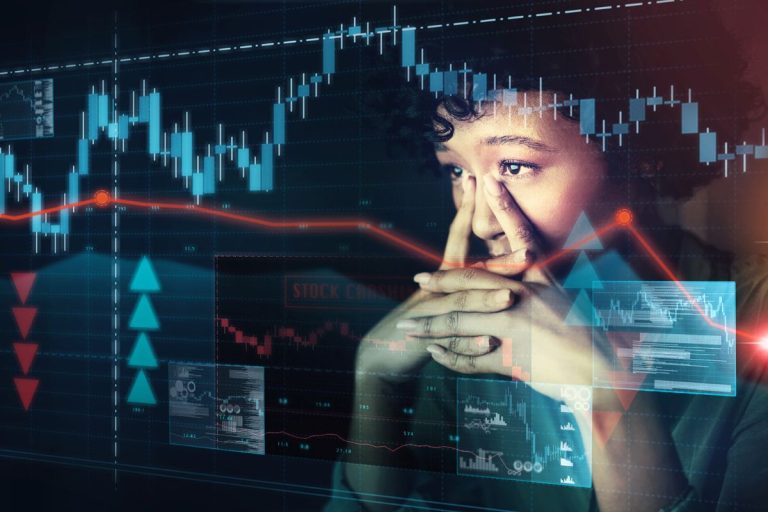Global markets are on edge as former President Donald Trump’s aggressive tariff policy shakes investor confidence and triggers fears of a fresh trade war. After a chaotic weekend in the financial world, major U.S. stock indices have taken a nosedive, cryptocurrency has tumbled, and experts warn the worst may still be ahead.
As investors brace for the economic fallout of sweeping new import taxes, markets from Wall Street to Tokyo are showing clear signs of distress—highlighting the fragile state of a global economy already straining under the weight of inflation, supply chain volatility, and geopolitical uncertainty.
Stock Futures Plunge Amid Historic Sell-Off
The weekend sell-off was one for the record books. Futures for the Dow Jones Industrial Average fell by over 1,250 points—a 3.3% drop—while the S&P 500 lost 3.7% and the Nasdaq plunged 4.6%. Japan’s Nikkei 225 tumbled by 8% at Monday’s open, underscoring just how widespread the market anxiety has become.
The sharp decline follows a brutal two-day stretch last week that wiped out more than $5.4 trillion in market value, marking the worst downturn for U.S. stocks since the early days of the pandemic.
Energy markets also took a hit. U.S. crude oil prices dipped below $60 per barrel for the first time in three years, as fears mount that global demand for fuel-intensive activities—like shipping, aviation, and travel—will plummet if the economy slows.
Crypto Isn’t Escaping the Chaos Either
Even Bitcoin, which surged past $100,000 earlier this year on hopes of a pro-crypto stance from Trump, fell sharply—dropping 5.6% to around $78,700. The sell-off suggests that investors are moving toward cash and away from risky assets as uncertainty deepens.
While Bitcoin is often touted as a hedge against inflation, this latest dip underscores how tightly crypto markets remain tethered to broader economic sentiment.
Tariffs Take Effect—and More Are Coming
The market reaction stems directly from a dramatic escalation in Trump’s trade policy. Over the weekend, a universal import tax came into force following the signing of an executive order. But the bigger blow is expected Wednesday, when the U.S. will implement “reciprocal tariffs” on nearly 90 countries—targeting those with what the Trump administration deems unfair trade imbalances.
Key sectors like automobiles, steel, aluminum, and pharmaceuticals are directly in the crosshairs. Trump has also floated additional duties on copper, wood, semiconductors, and more, while warning that tariffs on auto parts could arrive by early May.
Commerce Secretary Howard Lutnick confirmed on CBS’s Face the Nation that “tariffs are coming,” emphasizing that the administration is not bluffing. Trump, meanwhile, insisted that “every country is being very nice” and “wants to talk,” although mixed messages have made it unclear whether negotiations are actually underway.
Recession Fears Mount on Wall Street
Economists and analysts are ringing the alarm bells. JPMorgan estimates the new tariffs could amount to a $660 billion annual tax increase—the largest in recent memory. According to the bank, these trade measures could add 2 percentage points to inflation, dragging the U.S. into recession by 2025 if fully implemented.
Their forecast now puts the likelihood of a recession at 60%, while Goldman Sachs revised its probability to 35% within the next 12 months.
Indexes are already showing the damage:
- The Dow Jones is in correction territory, down 10% from its December high.
- The Nasdaq has officially entered a bear market, shedding over 20%.
- The S&P 500 is down 4% and teetering on the edge of a full-blown bear market.
Who Pays the Price? Consumers, Mostly
Despite Trump’s claims that tariffs target foreign exporters, U.S. importers are the ones footing the bill—and passing those costs onto consumers. According to the nonpartisan Tax Foundation, the average American household will pay an additional $2,100 annually due to the sweeping import taxes. They estimate the effective U.S. import tax rate will soar from 2.5% to 19%, the highest since the Smoot-Hawley era of 1933.
Fitch Ratings echoed the concern, warning that this would mark the highest sustained tariff level in more than a century. With inflation already stubborn, this new tax burden threatens to further squeeze household income, which could fall by 2.1% on average this year.
A Silver Lining for Long-Term Investors?
In the midst of the panic, some see opportunity. With stock prices falling across the board, valuations are starting to look attractive. Currently, shares are trading at roughly 15 times forward earnings, a level not seen in years.
“We may be approaching a floor,” said James Demmert, Chief Investment Officer at Main Street Research. “These sharp drops feel like fear-driven selling. Historically, when panic sets in, it’s often followed by a strong rebound.”
Outlook: Uncertainty Reigns
As Trump prepares for high-stakes meetings with international leaders—starting with Israeli Prime Minister Benjamin Netanyahu—investors will be watching for any sign of policy softening or a potential off-ramp from the trade war. Until then, markets are likely to remain volatile, and recession concerns will dominate the conversation.
For now, the only certainty is uncertainty—and the world is waiting to see just how far this latest chapter in economic brinkmanship will go.


